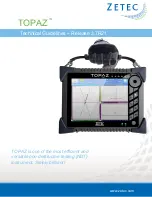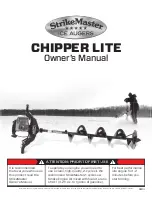
English (GB)
27
9. Fault finding the product
Before attempting to diagnose any fault, read and
observe the safety instructions in section
.
Observe all regulations applying to pumps
installed in potentially explosive
environments.
Make sure that no work is carried out in a
potentially explosive atmosphere.
Before attempting to diagnose any fault,
– make sure that the fuses have been
removed or the main switch has
been switched off
– make sure that the power supply
cannot be accidentally switched on
– make sure that all rotating parts have
stopped moving.
Fault
Cause
Remedy
1.
The pump does not
start. The fuses blow or
the motor-protective
circuit breaker trips out
immediately.
Caution:
Do not start
again!
a)
Power supply failure, short circuit
or earth leakage in the power
cable or the motor windings.
Have the power cable and motor
checked and repaired by a qualified
electrician.
b)
The fuses blow due to use of
wrong type of fuse.
Install fuses of the correct type.
c)
The impeller is blocked by
impurities.
Clean the impeller.
d)
The air bells, the float switches or
the electrodes are out of
adjustment or defective.
Readjust or replace the air bells,
float switches or electrodes.
2.
The pump starts, but the
motor-protective circuit
breaker trips after a
short time.
a)
Low setting of the thermal relay in
the motor-protective circuit
breaker.
Set the relay in accordance with the
specifications on the nameplate.
b)
Increased current consumption
due to large voltage drop.
Measure the voltage between two
motor phases.
Tolerance: - 10 %/+ 6 %.
Reestablish correct voltage supply.
c)
The impeller is blocked by
impurities. Increased current
consumption in all three phases.
Clean the impeller.
d)
The impeller clearance is
incorrect.
Readjust the impeller. See section
8.5 Adjusting the impeller clearance
.
3.
The pump's thermal
switch trips after the
pump has been running
for some time.
a)
The liquid temperature is too high. Reduce the liquid temperature.
b)
The liquid viscosity is too high.
Dilute the liquid.
c)
Wrong electrical connection (If the
pump is star-connected to a delta
connection, the result will be very
low undervoltage).
Check and correct the electrical
installation.
4.
The pump runs at
below-standard
performance and power
consumption.
a)
The impeller is blocked by
impurities.
Clean the impeller.
b)
The direction of rotation is wrong.
Check the direction of rotation. If it is
not correct, interchange two phases
in the power cable. See section
.
5.
The pump operates, but
delivers no liquid.
a)
The outlet valve is closed or
blocked.
Check the outlet valve and open
and/or clean it, if necessary.
b)
The non-return valve is blocked.
Clean the non-return valve.
c)
There is air in the pump.
Vent the pump.
















































